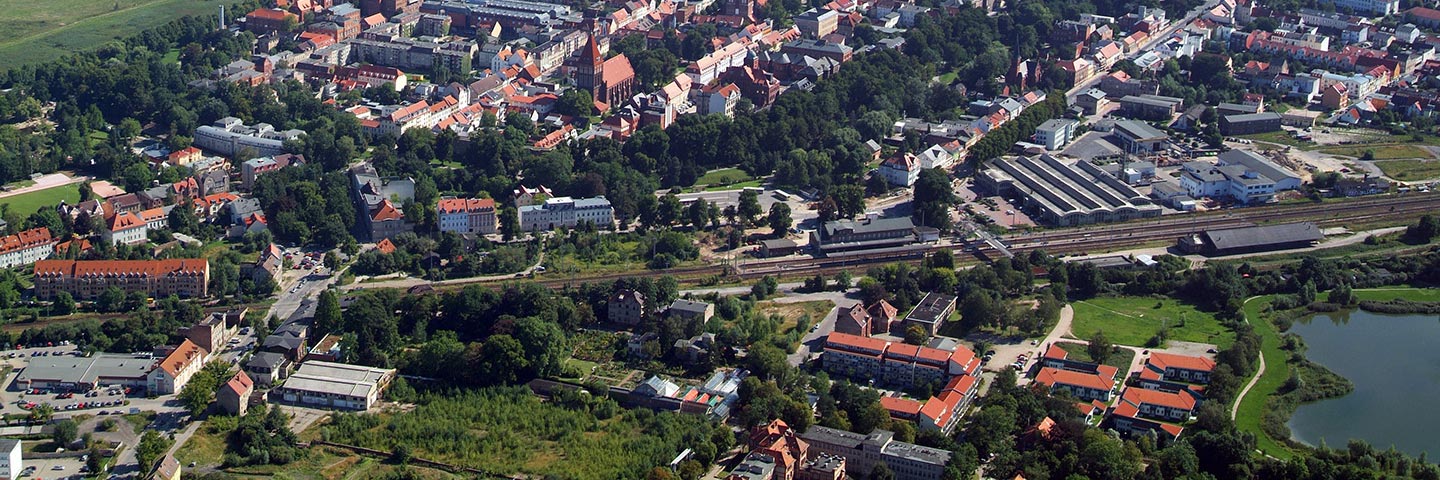News/All pieces
No peatlands in Bellevue's Garden?
Yes - at the Environment Week 2024
13/05/2024 There are no peatlands in the garden of Bellevue Palace? That's right, but there will be during the Environment Week on June 4-5.
We from the Greifswald Mire Center, together with the Agency for Renewable Resources, will be demonstrating how important peatland protection is for climate protection - with cattail in the wall and peat moss on the plate - at the Environment Week of Federal President Frank-Walter Steinmeier and the German Federal Environmental Foundation (DBU).
At our stand no. 35, interested visitors can find out how peat moss is propagated in a bioreactor or what a landscape with paludiculture looks like in a model. As a souvenir, you can take home some cress in a home-made press pot - filled with substrate made from paludiculture biomass, of course!
Registration for the event is open until May 15.
But what is the Environment Week? Not quite for a week, but for two days, Federal President Frank-Walter Steinmeier and the DBU invite environmental and nature conservation organizations and other exhibitors to the park of the official residence to showcase current and imaginative ideas and projects for more environmental, climate and species protection. The show is intended to inspire all participants for a sustainable future. The park will be transformed into a tent city. This year, around 190 exhibitors and more than 70 specialist forums on health, society, the economy, nature conservation, etc. will be taking place.
The Week of the Environment was launched in 2002 by the then Federal President Johannes Rau. Since then, it has been organized together with the Osnabrück-based German Federal Environmental Foundation. This year it is in its seventh edition.
Launch of PaludiAllianz

Companies for paludiculture
It was end of April, but the beginning for the Alliance of Pioneers: 14 large commercial enterprises from the paper, packaging, construction, insulation and wood-based material industries declared at a kick-off event in Berlin that they would test renewable, regional raw materials from wet peatlands in their production and integrate them wherever possible. According to the joint press release issued by the Michael Otto Environmental Foundation and the Succow Foundation, partners in the Greifswald Mire Centre, which launched the PaludiAllianz in the toMOORow initiative, the aim is to achieve rapidly growing demand for paludiculture in various sectors of the economy. Well-known companies are now among the founding members:
Interest in future paludiculture products in the construction sector has been expressed by prefabricated house manufacturer Bau-Fritz GmbH & Co. KG, the construction group STRABAG SE and OTTO WULFF Bauunternehmung GmbH and Sto SE & Co. KGaA. The companies toom Baumarkt and OBI Group Holding SE & Co. KGaA also consider biomass from paludiculture in the horticulture segment as a supplier of substrates. The retail and service company Otto (GmbH & Co. KG), LEIPA Group GmbH, the WEPA Foundation and, in the area of recyclables management, PreZero Stiftung & Co. KG with OutNature GmbH aim to make paper and packaging more sustainable by adding of paludiculture biomass. Procter & Gamble Service GmbH is involved in the area of consumer goods for household and cosmetics, as is Tengelmann Twenty-One KG with KiK Textilien and Non-Food in the retail sector.
“Development of scalable value chains with paludiculture biomass from rewetted peatlands in Germany in practical cooperation with economic players” (PaludiAllianz) is the detailed title of the project, for which Cem Özdemir, Federal Minister of Agriculture and Nutrition, handed over a funding decision of almost 1.8 million euros over the next three years at Kulturbrauerei in Berlin. As rewetting also offers effective natural climate protection, Federal Environment Minister Steffi Lemke was also a guest speaker at the event.
New GMC publication
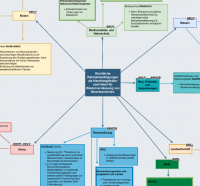
on peatland, law & rewetting
22/04/2024 "Legal framework conditions for the rewetting and use of peatlands - a mapping of fields of action and levers" is the full-length title of the new GMC publication. Above all, it provides a graphic overview of nine fields of action as well as the respective applicable legal bases and political strategies for rewetting and adapted peatland use in the Federal Republic of Germany. The focus is on the federal level. There are text boxes with suggestions as to which political levers could improve or accelerate peatland climate protection- The relevant ministries are conveniently assigned. The GMC publication is intended as a basis for further and more detailed legal analyses.
Methane and rewetting
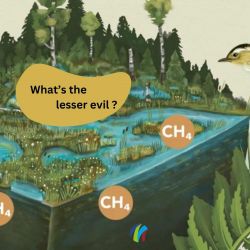
Explained in new film
17/04/2024 This film is troubleshooting this peatland question: What’s the lesser evil - drained peatlands emitting carbon dioxide (CO2) or rewetting causing methane (CH4) emissions? Find answers on:
Bioreactor, anniversary, investments & more ...
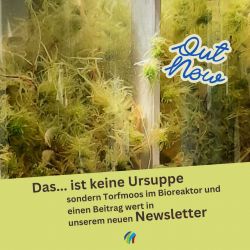
Newsletter: new issue
10/04/2024 These topics don't go together? Yes, they do, because hteir all topics of our new issue of the Paludiculture Newsletter. Read about
- what peat mosses have to do in a bioreactor,
- what the provisional failure of the law to save the European Council now means for peatland,
- how the 25-year-old concept of paludiculture is not bogged down at all, but should be celebrated today, and
- why investing in peatlands is worth it
Not only do we hope you enjoy reading this newsletter, we would also be delighted to receive feedback on it. Simply write an e-mail to communication@greifswaldmoor.de.
MoorMaidens at Mapathon
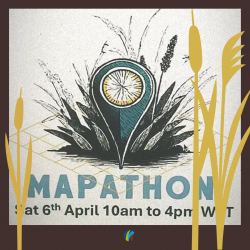
Open data mining for better peatland maps in Germany and worldwide
A map of all peatlands and wetlands in Europe is to be created as part of the Mapathon at the University of Galway, Ireland, on 6th April. The MoorMaidens, the team of the Greifswald Mire Centre, is determined to engage in quite some sound mapping acitivity the coming Saturday.
The event is intended to draw public attention to the peatlands, but also to the opportunities offered by open data. The wetlands will be considered from the following perspectives: Biodiversity, Climate Protection, Energy, Community & Culture, Environmental Quality - Water, Soil & Air, Land Use & Agriculture, Research & Applied Sciences, Economy.
Here's how it works: Each team selects a specific geographical area that it would like to map, usually a European country. With the help of open data, mire areas and the categories assigned to them are visualised.
The Mapathon will be streamed live on Zoom and YouTube throughout the day, and a technical support team will be available to answer questions via Google Chat. A full list of discovered open data on peatlands will be distributed to all participants after the event.
Interested parties are encouraged to participate online or on site. The main tool used will be QGIS. There will be an introduction and technical support if required.
A mapathon is a coordinated mapping event where the public is invited to make map improvements in their neighbourhood to increase coverage. The knowledge and work of many is brought together to form a whole from which everyone benefits.
The European Peatlands & Policies Open Data Mapathon 2024 starts on 6th April at 11 a.m. CET, and there are also great prizes for the best teams: The winners will receive 1200 EUR.
Biodiversity - how to save it?
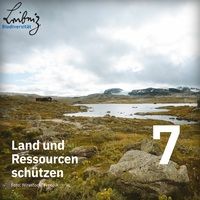
10 must knows from the world of research
Good news: There are only six years left to achieve the biodiversity targets, but we can do a lot to effectively conserve biodiversity at local, national and European level, in society and in politics! 64 scientists have compiled their ideas in the new report of the Biodiversity Research Network, coordinated by the Leibniz Association. Peatlands are mentioned right at the top (the Greifswald Mire Centre and the University of Greifswald also contributed to this), as their conservation helps to combat both the climate crisis and species loss.
In fact, only a small part of global biodiversity is understood so far. The report therefore recommends focusing on the functioning of entire ecosystems rather than individual species. Environmental measures can thus become more sustainable. The "10 must-knows from biodiversity research" provide facts for a National Biodiversity Strategy 2030, which is currently being developed. This will enable the German government to implement the 23 global biodiversity targets agreed by the member states of the United Nations at the World Conference on Nature in December 2022.
25 years of paludiculture
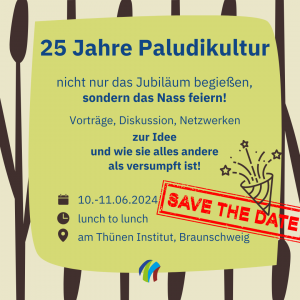
#savethedate
07/03/2024 The word paludiculture was born 25 years ago. A "simple" word was needed for an entire concept: rewetting drained moorland to stop the release of greenhouse gases and ... to continue using it in a new, sustainable form of agriculture. It was made up of two Latin words: palus for swamp and cultura for cultivation. A lot has happened since then: Pioneers have tried out paludiculture, research projects have looked at various aspects from sowing to certificates, politicians are looking into it and companies are beginning to discover paludiculture as a market. This development will be celebrated at the anniversary celebration on June 10-11 (lunch to lunch) in Braunschweig. The PaludiZentrale project, jointly organized by the Thünen Institute, the University of Greifswald and the Succow Foundation, invites you to lectures, excursions and intensive networking. The aim is to create a large Paludi network from paludiculture initiatives and projects in Germany to exchange know-how and experience.
Salon: Caspar and peatlands
Landscape painted, but also recognized?
10/02/2024 "Meadows near Greifswald" is one of the most famous works by the painter Caspar David Friedrich. It shows Greifswald and will even be on display in his home town in this year of the romantic painter' 250th anniversary, only ... it does not show meadows. The view up to the town's silhouette falls on drained peatlands, then as today. In the salon series of the Caspar David Friedrich peatland professor Hans Joosten will talk about this discrepancy, about Adelbert von Chamisso's "Untersuchung eines Torfmoors bei Greifswald", published almost at the same time (1824), and about the relationship between man and nature or landscape. The salon evening on February 22 at 7 p.m. in Ellernholzstr. 1-3 is free of charge, but registration is required.
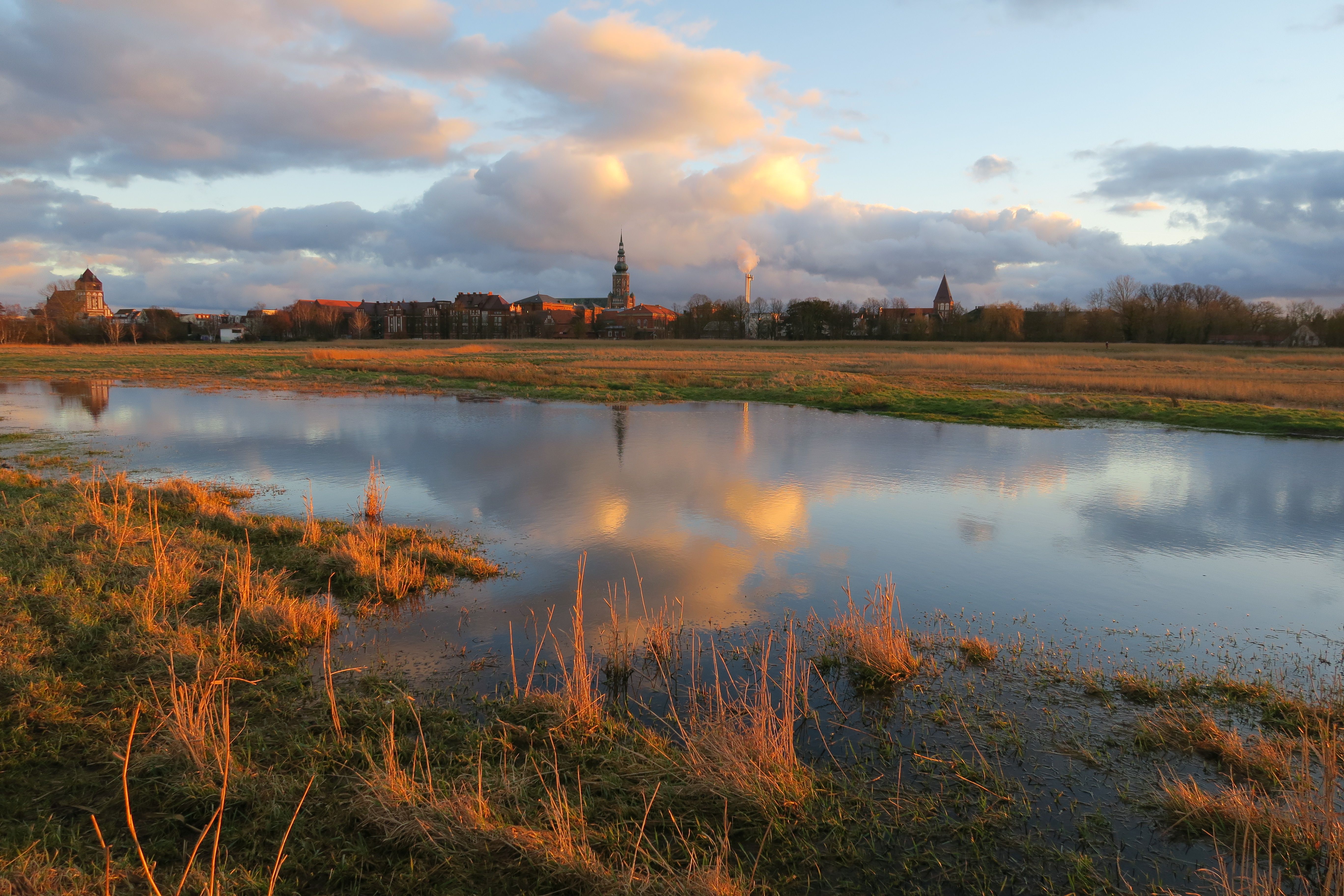
PaludiZentrale
Accompanying wet peatland use on the way to market
24/01/2024 The PaludiZentrale project bundles four recently launched model and demonstration projects (MuDs) for peatland protection and the utilization of biomass from rewetted areas for more economic paludiculture potential. Jointly managed by Thünen Institute Braunschweig and University of Greifswald, it coordinates and ensures uniform scientific data collection and knowledge exchange. It evaluates results of all aprticipating projects and develops suggestions for political and economic framework conditions as well as recommendations for action for implementation in practice. It also takes care of the transfer of knowledge. The researchers will accompany the new model and demonstration projects in raising the water level at least close to the surface on peatland areas and growing paludicultures (Latin palus: swamp, cultura: agriculture). Another task is to push the utilisation of peatland biomass towards practical use. The projects “Management and biomass utilization of wet fens in Brandenburg (WetNetBB)”, “Living Lab Teufelsmoor – climate and nature conservation-oriented wet management of peatland soils with innovative growth utilization in the Osterholz district (LivingLab Teufelsmoor)” and “Sustainable production and utilization of cattails on fen sites in Lower Saxony (RoNNi)” in Lower Saxony are concentrated on the cultivation of reed and cattail to be used e.g., in building materials or as energy source. The project “Sphagnum paludiculture as a sustainable agricultural use of raised bog soils (MOOSland)” is developing large-scale peat moss cultures for substituting peat.
The rewetting of peatland reduces emissions that are harmful to the climate. In addition, climate-friendly, even climate-positive and locally renewable raw materials can be obtained from these areas for a circular economy as a replacement for previously used petroleum-based materials. The market for biomass from wet peatlands is still small. However, the large-scale rewetting of peatlands can only be successfully implemented with an economic perspective. This perspective is crucial to promote acceptance among both land owners and users and throughout society. That is why the four MuDs and the overarching technical coordination through the PaludiZentrale project are dedicated to building value chains from cultivation to utilization. They are aimed at the building materials, paper and fiber, horticultural substrates and energy production industries. PaludiZentrale ensures exchange and advice on the development of appropriate products, raw material properties, requirements and possible hurdles not only between the MuDs, but also with industry representatives, farmers and other actors. This ensures that scientists can collect and comprehensively evaluate data using a uniform and comparable methodology. This refers to cultivation and utilization, to business and socio-economic analysis. It also concerns the monitoring of long-term economic and ecological impacts, for example how greenhouse gas exchange, soils, hydrology, water quality and biodiversity develop on the rewetted areas. The researchers derive recommendations under which conditions paludicultures and their utilization in regional value chains can be economically worthwhile. This is followed by the transfer of knowledge in politics, practice and society, which is implemented jointly by the Michael Succow Foundation and the University of Greifswald, both partners in the Greifswald Mire Centre. The Federal Ministry of Food and Agriculture (BMEL) is supporting the ten-year project with funds from the Climate Transformation Fund (KTF); the project sponsor is the Agency for Renewable Resources (FNR). In addition, the PaludiZentrale project also aims to network the MuD projects via the so-called “PaludiNetz” with four pilot projects on moorland protection that are already underway and run by the Federal Ministry for the Environment, Nature Conservation, Nuclear Safety and Consumer Protection. (BMUV) is financed by Z-U-G gGmbH as the project sponsor and will also run for ten years.
